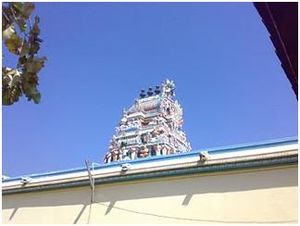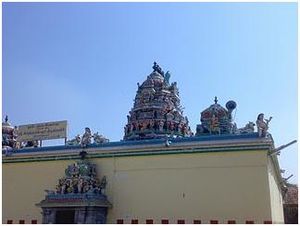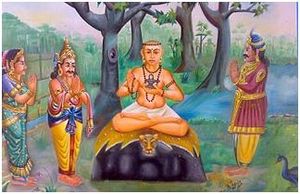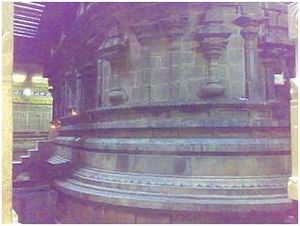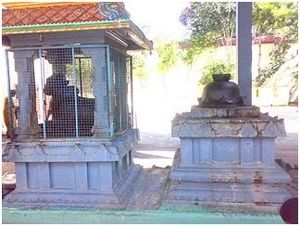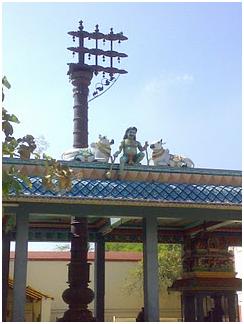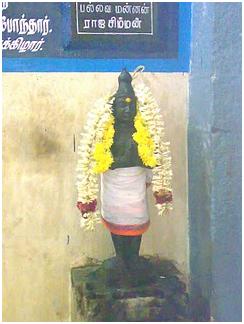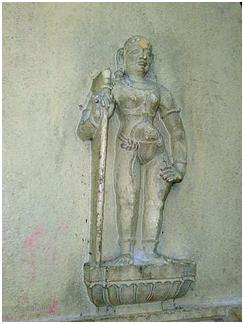Thiruninravur Sri Hridhayaaleeswarar
Thiruninravur (திருநின்றவூர்) is situated in Thiruvallur District and is about 35 kms from Chennai. On the road from Chennai to Thiruvallur, one has to turn right after Thirumazhisai. From there Thiruninravur is about 4 kms. Thiruninravur can also be reached by Suburban trains from Chennai to Arakkonam, after Pattabiram. Thiruninravur has an ancient temple for Lord Shiva which is about 1500 years old. The main deity here is called Sri Hridhayaaleeswarar. The Goddess here is Sri Maragadhaambigai.
The story of this temple dates back to 7th century during Pallava reign. There was a Shiva devotee living in this place during 7th century called Poosalaar. He has been an ardent devotee of Lord Shiva. Poosalaar had an extreme ambition in his mind to build a temple for Lord Shiva at this place within his lifetime. He sought for help with many rich people who can fund him to raise a temple. But hardly anyone helped him. Knowing that he won’t get any help, Poosalaar finally decided to build a temple for the Lord by himself, at his heart itself. As he was well read and knew all the Aagama Vidhis and nuances to build a temple, he wanted to start building the temple.
He sat under a tree called Iruppai tree in the village and started meditating. He planned each and every small detail to perfection for the construction of his own temple in his mind itself. He also marked an auspicious day to commence the holy work. The temple started growing up in his mind. It is said that Poosalaar actually took the same time (or months) which will be consumed to construct an actual temple. He built the temple step by step. He had designed everything in his mind right from Vimana, Sanctum, Temple Pond, Compound walls etc., and executed each in detail as per what he had in mind.
After everything shaped up in his mind the temple construction work came to a finish. He even had organised all the utensils required for the temple. Finally, he also fixed an auspicious date for Kumbhabishegam (consecration) of the temple. He prayed to Lord Shiva to be present for the consecration and offer His blessings. During the same period, a king called Rajasimma Pallava was ruling this part, with his capital as Kaanchi (today’s Kanchipuram). He also was a sincere devotee of Lord Shiva and was building a huge beautiful temple for the Lord, at Kaanchi. He also named the God as Kailasanathar and the temple as Rajasimmeswaram.
The king also marked a date for consecration, while the finishing touches were going on at the temple. One day after visiting the progress of the temple work, he was very tired when he went to bed. Lord Shiva appeared in his dream and told him that He cannot make it to the consecration of the king’s temple on the said date and asked him to change the day of consecration, as He had to be present for consecration of another temple built by Poosalaar of Thiruninravur.
The king woke up shockingly and couldn’t believe himself. He was worried that God Himself has given priority to someone else’s temple than his temple. He wanted to know about the temple which God informed him of. He immediately started with his queen, ministers and parivaar to see Poosalaar’s temple at Thiruninravur.
He came to Thiruninravur the next day and enquired with many people about a new Shiva temple built by Poosalaar. Nobody knew anything about the temple but directed the king to the place where Poosalaar was meditating under the Iruppai tree.
King went and asked Poosalaar himself about the temple. Poosalaar, on hearing the king explaining about his dream, was overwhelmed to realize the mercy shown to him by Lord Shiva. Poosalaar explained the king that he had been constructing the temple in his heart (Manasu in Thamizh) and had fixed a date for consecration.
Poosalaar made the king to look at his heart and realize the temple which he constructed. King was able to see and realize the temple made by Poosalaar. Knowing this Rajasimma was amazed to see the devotion and sincerity of Poosalaar. The king himself took all the specifications of the temple which Poosalaar had in mind and physically constructed a temple for the Lord here. This temple is also called Manakkoil. As Poosalaar originally built the temple for the Lord in his Hridayam, the Lord here is known as Hridhayaaleeswarar.
Though there are 2 entrances to this temple, on east and west, the Lord here faces east here. There is a grand Dhwajasthambha and Nandhi on the outer prakaaram. The sanctum is built in Gajabrishta or Thoongaanai Maadam (தூங்கானை மாடம்) shape, that is, the sanctum's shape will look like the back of the sleeping elephant. Lord Hridhayaaleeswarar offers dharshan in the form of a Shiva Lingam. Poosalaar is seen praying the Lord. There is an idol of Rajasimma Pallavan too inside the temple.
Sri Ganapathy and Sri Subramanyar are seen standing on either side of the entrance of the sanctum like Dwarapaalakas. Other deities like Sri Dhakshinamurthy, Naalvar, Sri Maha Vishnu, Sri Siva Subramanyar with Sri Valli and Sri Devasena, Sri Brahma, Sri Durgai, Sri Sandigeswarar, Sri Sivagama Sundari Sametha Sri Natarajar and Sri Bairavar are seen in the inner praakaarams. Wonderful carvings are seen on the pillars of the temple, but many of them painted white, hiding their originality. There is also a mandapam in which Vaahanam (Rishabham) for the Lord is kept for Urchavams. Many devotees in recent years have started worshipping Lord here, for getting recovered from heart ailments, as the Lord himself is called Hridayaaleeswarar. A beautiful temple worth a short drive, away from Chennai.

